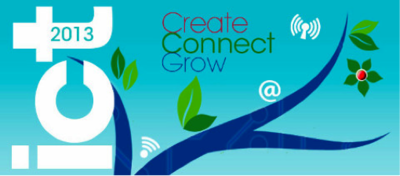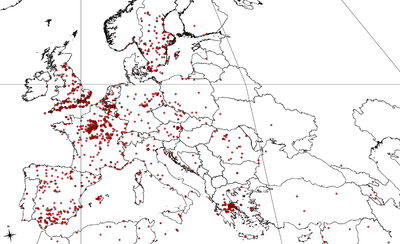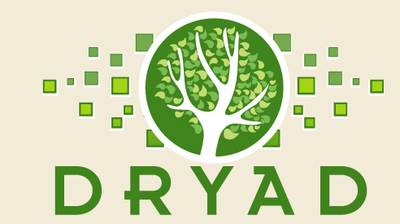Two of the biggest challenges of aggregating data and giving credit to the sources are duplication and ambiguity. The easiest way to resolve this is through unique persistent identifiers to objects, events and people. In pro-iBiosphere we have discussed at length identifiers for specimens (http://wiki.pro-ibiosphere.eu/wiki/Best_practices_for_stable_URIs). However; a solution already exists for people. ORCID is an open, non-profit, community-driven organization that provides a registry of unique and persistent researcher identifiers.
ORCID is a hub that connects researchers and their professional activities through the embedding of ORCID iDs in key research workflows, data systems and other identifier systems. ORCID is unique in its ability to reach across disciplines, research sectors and national boundaries and in its cooperation with other identifier systems. The ORCID iD is a key component that supports system interoperability.
- ORCID improves discoverability and reduces repetitive data entry.
- ORCID reduces activity reporting, eases staff burden, and simplifies the manuscript submission processes.
- ORCID iDs overcome name ambiguity, distinguishing researchers and ensuring work is correctly attributed.
- ORCID supports a more comprehensive understanding of global research, investment and impact.
Working in collaboration with others in the research community — universities, research organizations, funders, publishers and professional associations — the embedding of ORCID iDs is widespread and includes integration in researcher profile systems, manuscript submission processes, HR systems, grant applications, and in linkages with repositories and other researcher identifier systems. ORCID benefits the entire research community, and relies upon its organizational members for support.
Registration is free for researchers, and they control the privacy of their ORCID record. It only takes seconds to register — visit ORCID today.
Quentin Groom (http://orcid.org/0000-0002-0596-5376)
Rebecca Bryant (http://orcid.org/0000-0002-2753-3881)
 ORCID logo
ORCID logo
On the 2nd July 2013, I attended the EC Public consultation on open research data.
The EU has already a commitment to open publication of publicly funded research, but this was a consultation on the policy for the openness of data. The European Commission recognizes that openness of data is better for scientific advancement, it promotes innovation and it is also good for the citizen. It means that scientific research will be more verifiable and it will promote acceptance of research.
There were five topics for consultation:-
1. What types of data should be open and how do you define what research data is?
2. What restrictions should be placed on openness and when?
3. Where should open data be stored and made accessible?
4. How can a culture of openness be promoted?
5. How can issues related to re-use, such as citation, be addressed?
There were many perspectives at the meeting, from industry, medical research, particle physics, publishers, research funders, librarians, etc. However, from a Biodiversity perspective I came away with several points that I thought worth sharing.
1. Biodiversity researchers are much better placed than many other fields to move towards openness. We are not often restricted by issues of personal privacy and commercially sensitive data.
2. Being open with data will cost money. It is still not easy for the majority of biodiversity scientists to get their data in a format that they can deposit in a central repository. This will require investment in software and training.
3. Well maintained central repositories are essential for the storage, dissemination and citation of open data.
4. Unique identifiers of people (e.g. ORCID), publications (e.g. DOI) and data are essential for a culture of openness.
5. Data management plans are likely to be required in Horizon 2020 proposals, either in the proposal or as a first deliverable. Data management plans are now becoming essential at national and institutional level.
We have a long way to go in the promotion of openness in the Biodiversity community. Other scientific communities are well ahead of us. Yet there are good reasons to be optimistic, particularly with the progress of open publication. A change to a culture of sharing will develop if issues of citability of data can be resolved and if institutions give recognition to researchers for being open with their data.
Can I suggest you register for an ORCID today? It will help you get credit for your work and move us towards more open science.
CC-BY
Article by Quentin Groom (NBGB)
Second anouncement of the BIH2013 meeting
The conference Biodiversity Informatics Horizons 2013 (BIH2013) is part of a continuing process to structure and organise the biodiversity informatics community at the European level and beyond.
BIH2013, organised by several EU projects[1], will take place over 3 full days, from lunchtime on Tuesday 3rd September to lunchtime Friday 6th, with workshops and training events on Tuesday Morning and Friday morning. The venue will be in Sapienza University, Rome (venue waiting to be confirmed).
The intention behind the meeting is to explore options for H2020 funding in this domain. The European Commission would like to see a greater level of cooperation, so less direct competition, in the responses to H2020 calls.
Invited speakers will review challenging areas and promising technologies in biodiversity informatics, pathways to sustainable implementation and changing the community culture in the context of the LifeWatch vision, decadal priorities for biodiversity informatics, and the EC roadmap workshop on biodiversity infrastructures.
Demonstration and training activities will demonstrate some of the new and exciting infrastructure building blocks that will come together to deliver the LifeWatch vision. A panel discussion with experts from regions of the world beyond Europe will explore opportunities for international cooperation that lead towards a sustainable global infrastructure. There will also be a plenary discussion on working together towards building a more sustainable future, informed by networking opportunities throughout the conference.
The conference website is: http://conference.lifewatch.unisalento.it/index.php/EBIC/BIH2013
Register before 31 July for early registration conference fee.
A demonstration session is available for persons wanting to show a software product or poster and we invite anyone to contact Dr Aaike De Wever <aaike.dewever_at_naturalsciences.be> to book a space before 12th August.
Alex Hardisty, Dave Roberts and Alberto Basset
(on behalf of the organising committee)
[1] BIH2013 is sponsored by BioVel, ViBRANT, LifeWatch, EUBrazilOpenBio and pro-iBiosphere. It has been organised with help from agINFRA, BioFresh, BIO_SOS, CReATIVE-B, e-Monocot, ENVRI, EU-BON, iMarine, Lifewatch, Natural Europe, OpenUp! and PESI.
A recent initiative of the CETAF ISTC (Consortium of European Taxonomic Facilities – Information Science and Technology Committee) aims to implement a consistent identifier system for biological collections. This could be an important contribution to the formation of an international system of stable identifiers for the realm of biodiversity data.
The desire to participate in the Semantic Web and Linked Open Data has caused new interest in modern alternative identifiers for natural history collection specimens. In 2012, the Royal Botanic Garden Edinburgh (RBGE) published a paper (Hyam et al.[1]); see also Stable Citations for Herbarium Specimens on the internet) on using the Linked Data principles to issue HTTP URIs (URLs) for their specimens. The CETAF ISTC initiative mentioned was triggered by the RBGE paper. Other important proponents include P. DeVries (see e.g. his 2012 presentation on Linked open Data).
The pro-iBiosphere project was instrumental in furthering this discussion by addressing the issue in depth during both the Leiden (2013-02) and Berlin (2013-05) workshops. Significant progress was made in reaching improved understanding of the problems of LSIDs, DOIs, and Semantic Web stable HTTP URIs; see the pro-iBiosphere report on "Towards Best Practices Guide on Editorial Policies". Additionally, a pro-iBiosphere best practices document for choosing stable URI patterns was developed.
The proposed system allows the implementation of a consistent identifier system for, for example, collections held by CETAF institutions. It is based on HTTP URIs and allows a clear distinction between physical collection objects and their associated metadata. It can provide both human and machine readable object representations.
In a "stable identifier hackathon" in June 2013 in Edinburgh, five CETAF institutions (Royal Botanical Garden Edinburgh, Museum für Naturkunde in Berlin, Royal Botanic Garden Kew, National Museum of National History Paris and Botanical Museum Berlin-Dahlem) committed to a rapid pilot implementation of the system. Naturalis Biodiversity Center in the Netherlands also plans to join this effort.
The identifier implementations of the five institutions will be reviewed during the planned pro-iBiosphere workshop on "Improving technical cooperation and interoperability at the e-infrastructure level", to be held in the week of the 8th to 11th October 2013. The workshop will also discuss the application of the technology on object types other than specimens. Furthermore a demonstration on applications to show how the system can be used will be organised.
As we demonstrate the value in this way of working, the pro-iBiosphere consortium aims to encourage other institutions to adopt HTTP URIs for their specimens. The annual meeting of TDWG Biodiversity Information Standards that will take place in Florence in November 2013 and future pro-iBiosphere workshops will be used for this purpose.
The URI approach will be expanded to other domains like treatments or images within the pro-iBiosphere pilot studies (Task 4.2). Separately, a dialogue between DataCite and our community on creating a subdomain of DOIs for observation data is being pursued.
Already Zoobank has committed to offer this approach as an alternative to its present LSID-based system. We expect other institutions in the biodiversity domain to follow and hope that the system can serve as a blueprint for additional biodiversity informatics object types beyond collections.
Article by Anton Güntsch and Gregor Hagedorn
[1] Hyam, R., Drinkwater R. E. & Harris, D. J. (2012) Stable citations for herbarium specimens on the internet: an illustration from a taxonomic revision of Duboscia (Malvaceae). Phytotaxa 73: 17–30
The Vice President of the European Commission, Neelie Kroes and the President of the Republic of Lithuania, Dalia Grybauskaitė will open the conference.
Speakers from across the ICT sector will address a range of issues from cloud computing, broadband, ICT infrastructures, ICT skills, cyber security, long term visions on the future and much more.
Experts will present details on how to participate in the next EU's Research Programme - Horizon 2020.
Three thematic plenaries and three parts focusing on different themes of ICT research:
• ICT for Excellent science;
• ICT for Industrial Leadership;
• ICT for Societal challenges.
A special focus wil be on Digital Futures - a journey into 2050's futures and policy challenges.
More than 4000 researchers, innovators, entrepreneurs, industry representatives, young people and politicians are expected in Vilnius.
Visit ICT2013 website here to find out more on the conference programme.

It can be surprisingly hard to map the global distribution of a species and even harder to understand how it has changed with time. Even though many millions of observations are available on the Global Biodiversity Information Facility, many more are buried in books, papers, on specimens and in databases. What if all these observations were available to us, wouldn’t this help reveal species distributions and their change?
In order to address interoperability issues, the pro-iBiosphere project is conducting various pilots. One of these pilots is testing ways in which information from legacy texts can be digitized to consolidate data. We plan to use these data to reveal how the distribution of one particular plant species has changed over time: i.e., Chenopodium vulvaria L., a small annual weed commonly associated with man-made disturbance. Due to its striking smell of rotten fish, C. vulvaria (also known as "Stinking Goosefoot") is easily identified and unlikely to be confused with any other plant.
While, in California (USA) and Victoria (Australia) it is considered an invasive weed, in northern Europe it is a declining species and has been included on the Red Lists of several countries. No one knows why this species is decreasing in some places and increasing in others. Indeed, we don’t even really know what its complete distribution is, let alone the rates of spread and decline.
To convert all the paper records of Chenopodium vulvaria into data, we first need to convert them to digital text. Sometimes, this can be done with Optical Character Recognition (OCR), but in cases were old fashioned fonts have been used, transcription can be done in Wikisource, which is more reliable, but slower than OCR. Once we have the digital text, we mark it up using the GoldenGate Editor. This tool allows us to semantically markup the text so that its meaning is explicit. These data can then be loaded into a database, georeferenced and studied.
Records of biodiversity are, by nature, patchy and biased both spatially and temporally. They are fortuitous accounts of species collected by many different individuals over long periods for a multitude of reasons. Just like fossil hunters, we only get snippets of information from different places and times. Using these pieces of evidence we can reconstruct the situation of the past through statistical techniques. Undoubtedly, the more information we can gather the more reliable our reconstructions will be. So far, we have gathered over 2000 dated observations of Chenopodium vulvaria from hundreds of books, databases and herbaria. Ultimately, we aim to have the best possible set of observations for this species.
The website of the pilot project is a portal to all the data we have gathered so far on Chenopodium. It is a work in progress, so please do not be surprise when you find gaps in the information. If you happen to have information on Chenopodium, we hope you might consider contributing it.
Article written by Quentin Groom (National Botanic Garden, Belgium)
Also collaborating on the pilot project are Patricia Kelbert, Sabrina Eckert & Susy Fuentes (Botanischer Garten und Botanisches Museum Berlin-Dahlem)

Biodiversity Informatics Horizons 2013 (BIH2013) is part of a continuing process to structure and organise the biodiversity informatics community at the European level and beyond.
BIH2013, organised by several European Union projects[1], will take place over 3 full days, from lunchtime on Tuesday 3rd September to lunchtime Friday 6th, with workshops and training events on the mornings of Tuesday and Friday. The meeting will take place in central Rome and the venue will be confirmed at a later time.
The intention of the meeting is to bring together those likely to form consortia for Horizon 2020 (H2020) funding in this domain. H2020 workplans should be accessible by September to allow the forming of consortia.
Invited speakers will review challenging areas and promising technologies on the subject of biodiversity informatics, pathways to sustainable implementation and changing the community culture in the context of the LifeWatch vision, decadal priorities for biodiversity informatics, and the European Comission roadmap workshop on biodiversity infrastructures.
Demonstration and training activities will demonstrate some of the new and exciting infrastructure building blocks that will come together to deliver the LifeWatch vision. A panel discussion with experts from regions of the world beyond Europe will explore opportunities for international cooperation that lead towards a sustainable global infrastructure. There will also be a plenary discussion on working together towards building a more sustainable future, informed by networking opportunities throughout the conference.
The conference website can be accessed here.
Please register before 31 July for early registration conference fee.
A demonstration session is available for persons wanting to show a software product or poster, please contact Dr Aaike De Wever: aaike.dewever[at]naturalsciences.be to book a space before 12th August.
---
[1] BIH2013 is sponsored by BioVel, ViBRANT, LifeWatch, EUBrazilOpenBio and pro-iBiosphere. It has been organised with the help of agINFRA, BioFresh, BIO_SOS, CReATIVE-B, e-Monocot, ENVRI, EU-BON, iMarine, Lifewatch, Natural Europe, OpenUp! and PESI.

Eduardo Dalcin [1]
In order to attend to Target 1 of the Global Strategy for plant Conservation (GSPC), adopted by the parties in the Convention on Biological Diversity (CDB) of 2002, a Brazilian initiative coordinated by the Rio de Janeiro Botanical Garden (Rio BG) began in late 2008. The purpose of this initiative was to assemble and review the existing data on Brazilian plants, algae and fungi, and to deliver a complete list of known species by 2010. [2]
The Rio BG and Centro de Referência em Informação Ambiental (CRIA) developed a database and a web interface to support the project. The compiled data were reviewed and refined online by a network of 413 taxonomists during 2009. This remarkably comprehensive and rapid collaboration was made possible only through advances in information and communication technology as well as the increased page load speed. The increase of the speed of the website has allowed many people to work remotely and simultaneously. Finally, the list was released online in May 2010 and was published in The Brazilian Catalogue of Plants and Fungi. The resulting list that documented 40,989 species of Brazilian algae, land plants, and fungi, of which 18,932 (46.2%) are endemic to the country. [3]
In 2010, the Rio BG received a new mission from the National Research Council (CNPq) to build up a "Virtual Herbarium of Repatriated Plants" (VHRP) - The REFLORA Program. The Brazilian government signed a Memorandum of Cooperation (MoC) with Royal Botanic Gardens Kew (RBGk) and the National Museum of Natural History, Paris (MNHN) in order to make possible the "repatriation" of the high resolution digital images of the herbarium vouchers of Brazilian plants collected in Brazilian territory that are kept in their collections.
The VHRP and National Plants Checklist; other initiatives, such as National Endangered Plants Assessment (also coordinated by the Rio BG and the National Center of Flora Conservation (CNC Flora)) and a new GSPC Target for 2020 - "World Flora Online" led to a necessity of a new information system architecture, integrating all the related systems around a taxonomic and nomenclatural backbone. Thus, in a partnership with the Federal University of Rio de Janeiro / Systems Engineering and Computing Program (PESC/ COPPE/ UFRJ), in 2010, the Rio BG starts to develop a new institutional scientific information system, integrating all related initiatives of scientific collections, references, images and maps. The new version of the "List of Species of the Brazilian Flora" (part of this integrated system), was launched in February 2013. It was well received by the scientific community.
At the end of year 2013, the VHRP will be launched. This project will link vouchers from RBGK, MNHN and Rio BG, promoting the digital environment in which taxonomists and experts can discuss the material that is available, suggest names, point out duplicates and improve data quality.
In the period between 2014 and 2017, the Rio BG is planning to integrate the CNC Flora’s information system and also start the evolution of the "List of Species of the Brazilian Flora" system toward the "Flora of Brazil Online".
Considering all the activities and responsibilities of biodiversity information management in Brazil, I was invited to attend the pro-iBiosphere meetings in Berlin (21 - 23 May 2013). This meeting provided me an excellent opportunity to be in touch with leading institutions and researchers from Europe and abroad and share experiences and approaches related to the management of biodiversity information. I have learned new information and made valuable contacts.
[1] Coordinator of the Scientific Computing Center at the Rio de Janeiro Botanical Garden - Brazil
[2] Forzza, Rafaela C., et al. 2012. New Brazilian floristic list highlights conservation challenges. BioScience 62.1: 39-45.
[3] Ibid; The list was published in Forzza, Rafaela C. 2010. Catálogo de plantas e fungos do Brasil. Vol. 1. Jardim Botânico do Rio de Janeir
When Herbaria@home started in 2006, it was a ground-breaking approach to digitise and document the archives/material of the United Kingdom's herbaria. The website provides a web-based method for documenting herbarium sheets so that they can be accessed by anyone with internet connection.
The United Kingdom has the world's largest and oldest collections of herbarium specimens held in trust by museums and universities. Documenting large herbarium collections is an extremely labour-intensive task and most museum collections are woefully under-funded as a consequence of which most of the specimens are undocumented and unavailable. Through the efforts of a small army of amateur botanists, the plant biodiversity of the United Kingdom is the most studied and recorded in the world. This project aims to apply some of that effort to making the wealth of information from historical collections widely accessible and available.
The latest innovation of the project focuses on visualizations. These are produced to identify collaboration networks between botanists during different periods based on synthesized data from Herbaria@home. The author of these visualizations is Dr. Quentin Groom (Botany and Information Technology), National Botanic Garden of Belgium.
Participation in the project is welcomed and anyone who is interested can get involved. All participants are kept informed with regular updates, and the specimens documented are immediately made available and searchable on the web.
EUBrazilOpenBio invites pro-iBiosphere members and biodiversity stakeholders to access two new training exercises on ecological niche modelling and cross-mapping on their website.
The objective of the new exercise on ecological niche modelling is to study Adenocalymma dichilum A.H. Gentry. This species is endemic for Brazil. According to the Official List of Threatened Brazilian Plant Species, its conservation status is "Data Deficient". A reliable distribution model would help to decide whether the distribution is poorly known or restricted in a well-delimitated region in Brazil. This exercise goes through various steps, such as, retrieving occurance points and creating models, analysing the results of the models, projecting the models under exisiting conditions, etc. For more information on this exercise please click here.
The cross-mapping tool focuses on obtaining the list of taxa present in the family Passifloraceae that is in the List of Species of the Brazilian Flora (Brazilian Flora: LSBF) but not in the Catalogue of Life (CoL). The exercise goes through various steps, such as getting the Darwincore files with taxonomic checklists, running the cross-map algorithm, checking and exporting results, etc. For more information about this tool please click here.
Shuangxi Zhou[1]
My research project aims to establish a synthesis of field experimental data on the response of different plant functions to environmental changes and to study the relationships between plant traits, processes and key environmental factors. By incorporating recent advances in plant ecophysiology and biophysics and rapid accumulation of quantitative data on plant functional traits into current vegetation dynamics models, the project can contribute greatly to the evaluation and improvement of dynamic global vegetation models. The first paper, "How should we model plant responses to drought? An analysis of stomatal and non-stomatal responses to water stress", is in press now in the Agricultural and Forest Meteorology. Two glasshouse drought experiments in Sydney and Barcelona, and two transect field projects in south Australia and southwest China will be completed this year (for more details please click here).
As the only research student attendant, it has been a great pleasure to participate in the pro-iBiosphere meeting held in Berlin on 21st to the 23rd of May 2013. The meeting offered me many brainstorming opportunities to grasp advanced scientific and technical knowledge.
The meeting also allowed me to reflect on how my research is connected with other activities and used by various stakeholders. My research pursues the generic trends of trait and physiology variation in the context of key environmental factors and the translation of that variation into improved process representation in vegetation models. Discussion with other workshop participants, for instance, Jens Kattge (TRY Database Initiative) and Henry Ford (Ecological Flora of the British Isles, Bath University), made me aware of how my research work is connected to their database and being used by other disciplines. In my view, fundamental work on data collection and data quality control with specific standards is very important but easily ignored.
[1] PhD student, Macquarie University, Australia
Yong-Shik KIM, FLS, Ph.D.[1]
I attended the pro-iBiosphere meeting that took place during the 21st and 23rd of May 2013 in Berlin, and found the topics of the workshops diverse and useful. It was an unusual opportunity for me to brainstorm with an expert group on the user requirements of fundamental biodiversity data and information.
During the workshops, I was very impressed to learn about the progress made by various European countries and the USA in documenting biodiversity information, including Biotas (e.g. Floras, Faunas, Mycotas).
The Global Biodiversity Information Facility (GBIF) Korea is one of the key partners to document information on biodiversity, and approximately 1,680 thousand records have been documented so far. Also, the Korea National Arboretum has documented 280 thousand herbarium specimens and 260 thousand insect specimens in the Korea National Herbarium. After my return to Korea, I discussed the outcomes of the pro-iBiosphere meeting in Berlin with the representative of GBIF Korea. We agreed to work closely together to collaborate with the relevant organizations and institutions in Korea and pro-iBiosphere. We think that there is a need to make a significant step to interweave the collaboration on national, regional, as well as international levels.
I am involved on the Global Strategy for Plant Conservation (GSPC). One of the core strategies of GSPC is the documentation of plant diversity. In my view, linking the European Plant Conservation Strategy (EPCS) under the regional and national levels would be very helpful to the participants from Asian countries.
I think that the topics addressed during the workshops organised by pro-iBiosphere are of interest to biodiversity colleagues in Korea and other East Asian countries. We look forward to being more actively involved in future pro-iBiosphere workshops.
[1] Chair of the Korean Plant Specialist Group, Species Survival Commission, The World Conservation Union. Member of the Advisory Committee of the National Plant Red Listing in Korea, President of the Korean Association of Botanic Gardens and Arboreta (KABGA), and Korean Coordinator of the East Asia Botanic Gardens Network (EABGN).
Marianne le Roux[1]
An online Flora for South Africa will be compiled during the next few years in response to the updated Global Strategy for Plant Conservation (GSPC) 2011-2020. The GSPC includes five objectives and 16 targets. The first target states that an online Flora of all known plants must be created by 2020 (CBD, 2013). South Africa has agreed to participate in the global project and will produce an e-Flora for the country which can be incorporated into the World Flora Online. At present, seven regional Floras are being produced for South Africa. These Floras will form the foundation of the data published online. Information on the e-Flora will include: identification keys to families, genera and species, scientific names with author citations; descriptions; images; references; and environmental and organismal information relevant to conservation.
At the pro-iBiosphere workshops, held during May 2013 in Berlin, discussions were facilitated to determine:
- who the users of biodiversity information are?
- what services are typically required from institutions that generate the information?
- what are the costs involved in these processes? and
- how to deliver information in a sustainable manner?
During the breakout sessions and general discussions, emphasis was laid on important aspects that should be taken into consideration in, for example, compiling a Flora and how this information has to be presented to ensure intercommunication with other databases and its re-usability by different disciplines.
The workshop provided an opportunity to interact with people from a wide range of backgrounds (taxonomists to database developers) and to join forces in making progress towards sharing biodiversity information. At the pro-iBioshpere meeting I was introduced to peers who are also in the process of compiling Floras as well as publishers and database developers who were able to share their knowledge, insight and ideas around technical aspects involved in producing an e-Flora and finding solutions to common obstacles.
Reference
Decisions adopted by the Conference of the Parties to the Convention on Biological Diversity (CBD) at its Eleventh Meeting (Hyderabad, India, 8-19 October 2012) UNEP/CBD/COP/11/35 http://www.cbd.int/doc/decisions/cop-11/full/cop-11-dec-en.pdf
[1] E-Flora Coordinator, South African National Biodiversity Institute (SANBI). Contact: m.leroux@sanbi.org.za; Tel. +7212 843 5124
The EU FP7 funded project Pace-Net presents the 6th issue of its newsletter, where stress is placed on Recommendations for a Strategic Plan on Research, Innovation and Development in the Pacific formulated during the final Conference held in Suva (Fiji) in March 2013. The project will extend its life through the Pace-Net Plus, another Inco-net that already positively evaluated by the EC.
The newsletter also contains an evaluation of Pacific-European partnership in scientific research the External Advisory Board (EAB), where positive examples are given for bi-regional scientific cooperation. The issue presents a call for strengthening the science collaboration with developing countries in the Asia-Pacific Region, Latin America and the Caribbean.
European Environment Commissioner Janez Potočnik welcomed the creation of the European Citizen Science Association (ECSA) at an event at EU Green Week on Thursday, 7 June 2013.
The new body will be based in London and headed by Dr Linda Davies of Imperial College London – the director of OPAL.
ECSA aims to involve all European Union member states and engage five million people across the EU over the next four years.
Earlier at the Brussels-based EU Green Week conference, Dr Davies presented OPAL's experiences in engaging citizen scientists to collect air quality data for the OPAL air survey.
Find out more about OPAL and ECSA here.
A new ERA-NET is proposed to further the integration of national, EC and global e-infrastructure programmes. An experienced consortium comprising relevant national programme managers is proposed to develop the ERA-NET, called e-InfraNet.
e-InfraNET Project is ambitious to address the need for harmonising and co-ordinating the related national efforts and establishing a common European endeavour in order to serve successful integration of the diverse and parallel local and regional policies in the field of e-Infrastructures. The ERA-NET will be targeted at national programme managers and policy makers which will improve policy collaboration and build further on the outputs of existing groups, making sure the innovative policy ideas will be integrated properly in national and EC policy.
A key long-term impact will be the more efficient use of resources, and the adoption of best-practice in national e-infrastructure programmes. E-InfraNet will lead to a convergence of funding programmes and avoid unnecessary overlap. The variable geometry approach will allow for progress to be made, while giving flexibility to adjust to national requirements and leave the route open to all to build on successful joint actions.
To read more about the project please follow the link: http://e-infranet.eu/overview/
The San Francisco Declaration on Research Assessment (DORA) was initiated by the American Society for Cell Biology (ASCB) together with a group of editors and publishers of scholarly journals after a meeting in December 2012 during the ASCB Annual Meeting in San Francisco. The document recognizes the need to improve the ways in which the outputs of scientific research are evaluated.
DORA puts into question the use of Journal Impact Factor as a main tool for assessment, and proposes the consideration of various other factors towards more sophisticated and meaningful approaches. DORA is a worldwide initiative covering all scholarly disciplines.
To read the whole declaration, please follow the link: http://am.ascb.org/dora/

The data repository invites community input on the future of data archiving at upcoming membership meeting
Dryad, a repository for data underlying the international scientific and medical literature, works with a variety of journals, societies and publishers to archive research data at the time of publication. The project began in 2009 and has published more than 3,000 data packages. In 2012, Dryad incorporated as a nonprofit organization with the mission to make scientific and medical research data permanently available to all researchers and educators free-of-charge without barriers to reuse.
For the past four years, Dryad has worked with its stakeholders to develop a sustainability plan to realize this vision. Central to the sustainability plan is a one-time submission fee that will offset the actual costs of preserving data indefinitely. A variety of pricing plans are available for journals and other organizations such societies, funders and libraries to purchase discounted submission fees on behalf of their researchers. For data not covered by a pricing plan, the researcher will be asked to pay upon submission, with waivers provided to researchers from World Bank low and lower-middle income economies. Submission fees will apply to all new submissions starting September 2013. Dryad will also be supported in part by its membership, by grants for research and innovation, and by donors. Membership in Dryad is open to any organization that supports research and education. Dryad is pleased to include Pensoft Publishers among its Charter Members.
The Dryad Membership meeting, to be held in Oxford, UK on Friday, May 24 is open to members, prospective members, researchers and other interested parties. Attendees will hear about recent and upcoming developments in the repository and the nonprofit organization. In addition, there will be an Emerging Issues Forum with presentations from the community about future directions for Dryad, its members, and partner journals, including models for the technical and peer review of data, ideas for promoting the adoption of data citations, measuring data reuse, funder perspectives on the use of research grants for data management costs and the relevance of larger data networks.
Dryad’s Membership Meeting is part of a series of free public events in Oxford spotlighting trends in scholarly communication with an emphasis on research data, including a Symposium on the Now and Future of Data Publication on Wednesday, May 22nd and an ORCID Outreach Meeting with a special joint Dryad-ORCID Symposium on Research Attribution on Thursday, May 23rd. Registration for these events closes on May 13th. Remote attendance will be available for those unable to attend in person.
For more information about submitting data, becoming a member or the sustainability plan, please visit http://datadryad.org. The website also offers an Ideas Forum where people can make their voice heard by suggesting and voting for new features and offering comments.
CONTACT:
Laura Wendell, Executive Director
lwendell@datadrayd.org
+1-919-668-4005 or +1-919-423-3889

November 19-22, 2013 Alexander Technological Educational Institute of Thessaloniki, Greece
Continuing the successful mission of previous MTSR Conferences (MTSR'05, MTSR'07, MTSR'09, MTSR'10, MTSR'11 and MTSR’12), the seventh International Conference on Metadata and Semantics Research (MTSR'13) aims to bring together scholars and practitioners that share a common interest in the interdisciplinary field of metadata, linked data and ontologies. Participants will share novel knowledge and best practice in the implementation of these semantic technologies across diverse types of Information Environments and applications. These include Cultural Informatics; Open Access Repositories & Digital Libraries; E-learning applications; Search Engine Optimisation & Information Retrieval; Research Information Systems and Infrastructures; e-Science and e-Social Science applications; Agriculture, Food and Environment; Bio-Health & Medical Information Systems.
The pro-iBiosphere project is organising 3 workshops to be held on May 21-23, 2013 in Berlin:
- May 21st: Workshop on Requirements of users of Flora, Fauna or Mycota publications or services - more information here.
- May 22nd: Workshop on Measuring and constraining the costs of delivering services - more information here.
- May 23rd: Workshop on Coordination and routes for cooperation - more information here.
The workshops will take place at the JKI Biological Research Center located nearby the Berlin Botanical Garden and Museum.
You are invited to follow and/or participate in the discussions on Twitter by using the hashtag #pibber !
For complementary information on these events (concept and objectives, accommodation and transportation), please visit the dedicated project wiki pages here or contact us.





 pro-iBiosphere wiki platform
pro-iBiosphere wiki platform
 RSS news
RSS news

















